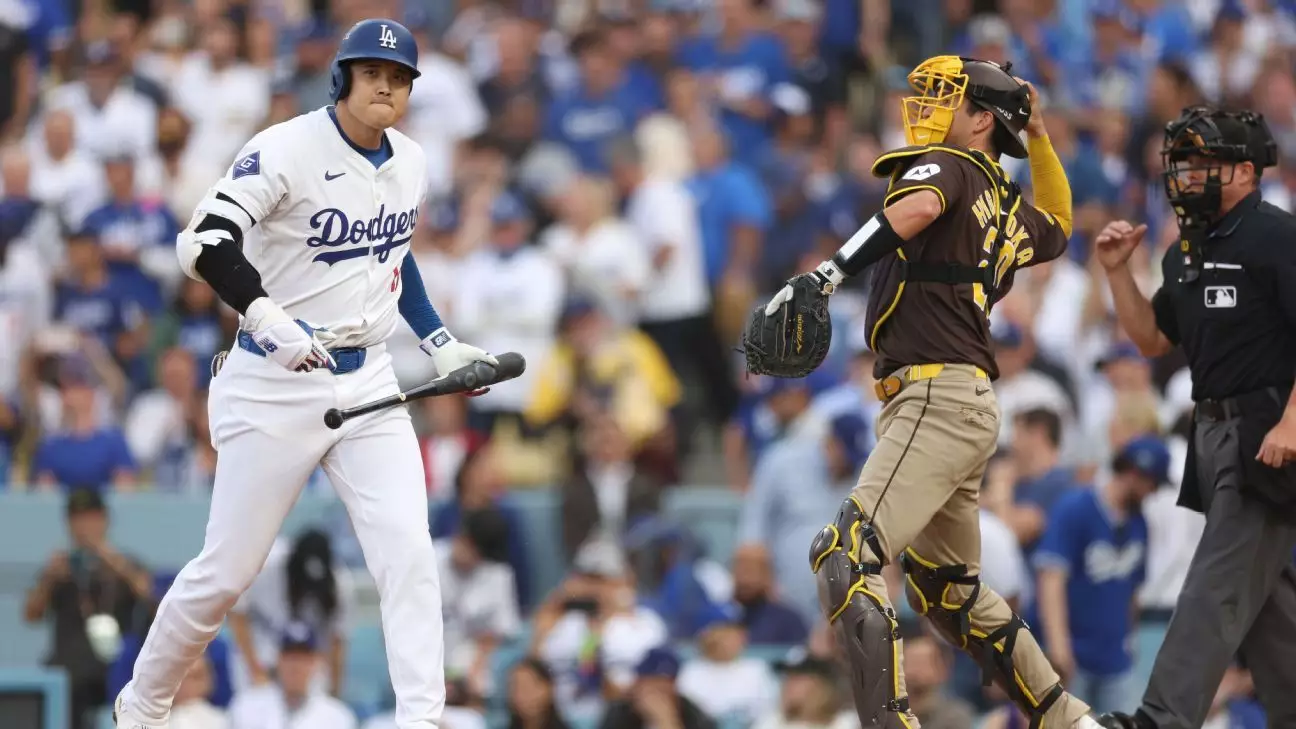As the excitement of the MLB playoffs unfolds, much of the attention is drawn to standout players like Shohei Ohtani, whose performances in critical moments can significantly influence the outcome of a series. Recently, Ohtani’s playoff statistics have raised eyebrows, particularly regarding his ability—or lack thereof—to hit with the bases empty. Manager Dave Roberts of the Los Angeles Dodgers has expressed unwavering confidence in Ohtani by keeping him in the leadoff spot despite his struggles. This decision has sparked discussions around the nature of Ohtani’s performance and the implications for the Dodgers as they strive for championship glory.
Ohtani’s postseason numbers tell a contradictory story. While he has recorded an impressive 6-for-8 performance with men on base, his 0-for-19 showing with the bases empty raises questions. The juxtaposition of these statistics points to an intriguing phenomenon in high-stakes baseball. As Roberts noted, the conversation around Ohtani has shifted dramatically from worrying whether he could capitalize on runners in scoring position to actively seeking ways to get base runners in front of him. Such contrasts can be comical but also highlight a deeper concern for the Dodgers’ strategy.
Roberts and Ohtani have both minimalized the significance of the splits, attributing them to the unpredictability of baseball rather than a significant flaw in Ohtani’s approach. Yet, the evident disparity suggests that Ohtani is perhaps more comfortable at the plate when he has a runner to drive in, reflecting the psychological toll of postseason pressure. This discrepancy poses questions: Does Ohtani thrive under certain conditions? And how might this influence future lineup decisions?
Ohtani’s mindset amidst this rollercoaster of performance appears steadfast. He emphasizes the need for consistency in approach regardless of the manner in which pitchers attack him. In his own words, Ohtani believes in staying focused on his plan and not becoming too concerned about the variations in his performance. This mental fortitude is admirable, especially given the scrutiny that players face during high-pressure playoff situations.
However, Roberts also pointed out that Ohtani has displayed tendencies to chase pitches more than usual, particularly against adept left-handed pitchers. This chasing can become problematic if not addressed, as it tends to lead to poor contact and diminished effectiveness at the plate. At the same time, recognizing these pitfalls is essential for players like Ohtani, who must adapt to the evolving landscape of postseason competition.
The Road Ahead: Trusting in Adjustments
Looking forward, both Roberts and Ohtani acknowledge the inevitability of needing resets throughout the season. This concept is vital not just for Ohtani but for all hitters who can fall prey to bad habits triggered by certain pitchers or high-leverage situations. The Dodgers’ management strategy seems to hinge on the belief that Ohtani’s batting slump is temporary and fixable—a philosophy that reinforces the importance of player confidence in achieving long-term success.
Interestingly, Ohtani’s consistent leadoff placement throughout the season reflects the organization’s commitment to an optimal lineup. Although Roberts has ruled out the idea of moving Ohtani down the batting order, such decisions could shape the team’s dynamics and impact performance as they eye the National League Championship Series. Roberts seems to be sending a message: Ohtani is a cornerstone of this team, and the trust in his potential will not waver—even amid struggles.
As the playoffs continue, the Dodgers, with Ohtani as a focal point, must navigate the complexities of player performance and strategic alignment. Ohtani’s ability to harness his potential and adjust to challenges will play a crucial role in the Dodgers’ chances. The postseason experience presents an opportunity for growth and reflection, not only for Ohtani but for the entire team. With faith in his prowess and a commitment to mental resilience, the Dodgers are positioned to maximize Ohtani’s impact in the high-stakes games ahead. The excitement surrounding this saga continues, illustrating how performance, strategy, and mental psychology converge in America’s pastime.


Leave a Reply